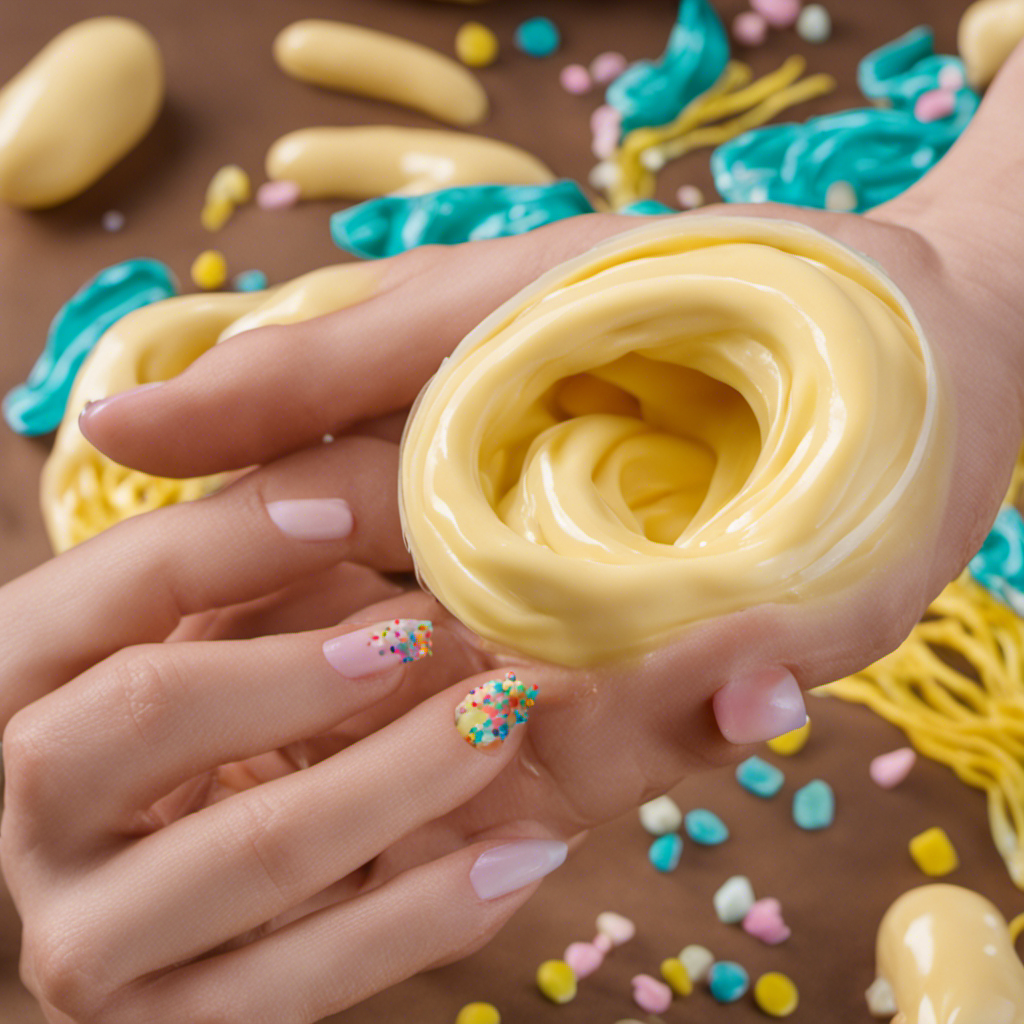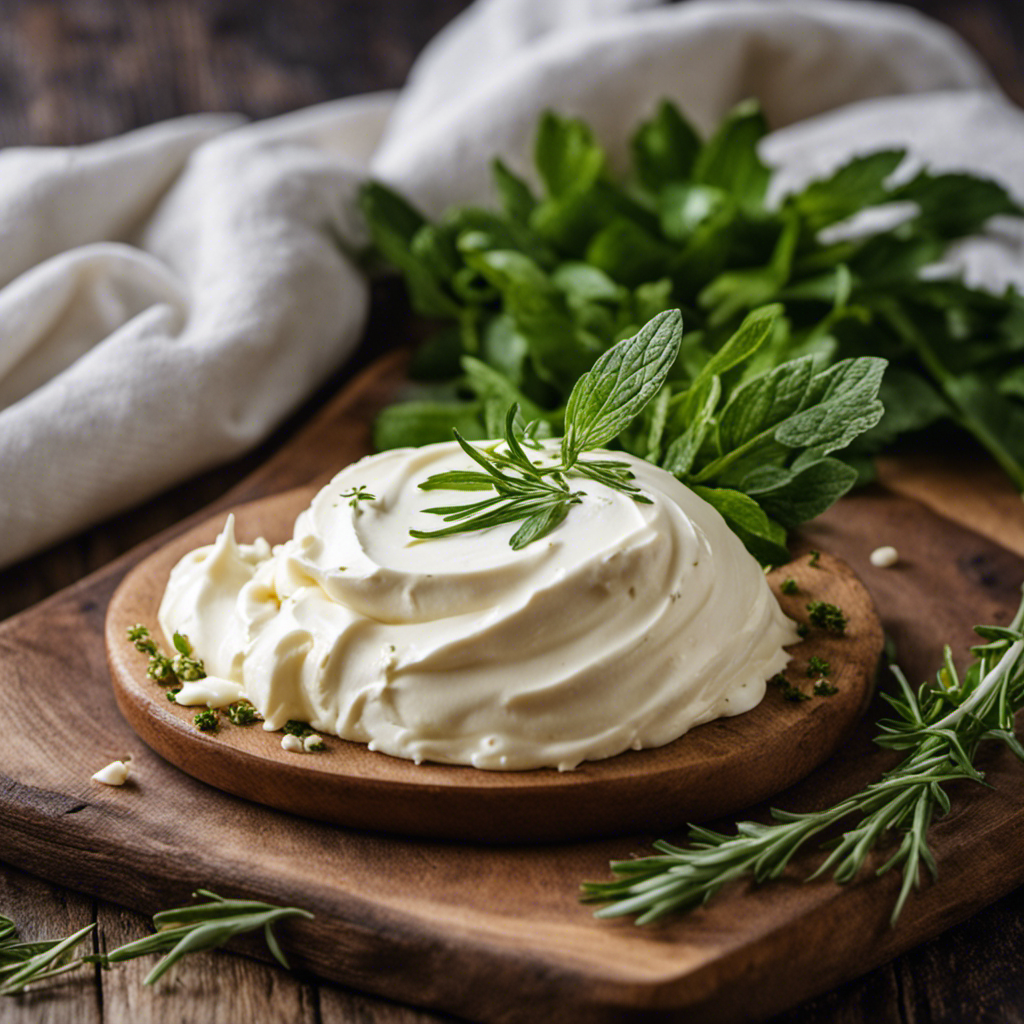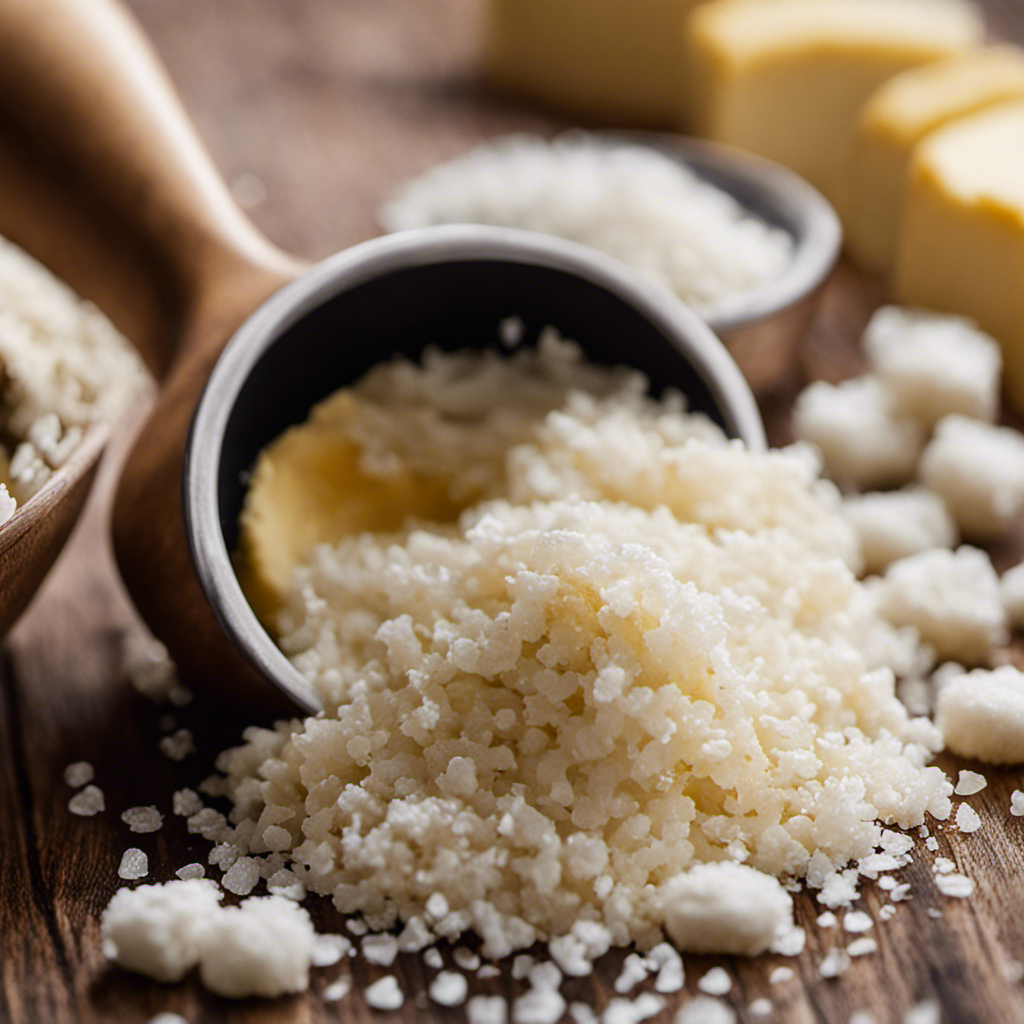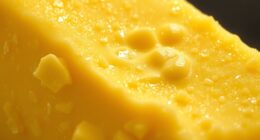Picture dipping your hands into a substance that’s as soft and stretchable as a cloud, with a texture akin to butter. This is the enchanting experience offered by butter slime.
As an avid slime enthusiast, I’ve become captivated by the world of homemade slimes, and butter slime has quickly become one of my favorites.
In this article, I’ll take you on a journey to discover what exactly butter slime is, how to make it, and all the exciting variations and tips to create the perfect batch.
Get ready to dive into the delightful world of butter slime!
Key Takeaways
- Butter slime is a type of slime that incorporates butter for a smooth and creamy texture.
- Butter helps to maintain moisture in the slime and provides a moisturizing effect.
- The main ingredients for making butter slime include glue, cornstarch, lotion, and food coloring.
- Butter slime can be enhanced with scents, textures, and colors, and can be used for various DIY projects.
The Origins of Butter Slime
You might be wondering where butter slime actually comes from. Well, the origins of butter slime can be traced back to the popular trend of slime making.
Butter slime is a type of slime that incorporates butter as one of its main ingredients. The benefits of using butter in slime are numerous. Firstly, butter adds a smooth and creamy texture to the slime, making it more enjoyable to play with.
Secondly, butter helps to maintain the moisture in the slime, preventing it from drying out too quickly. Lastly, the natural oils present in butter provide a moisturizing effect to the slime, keeping it soft and pliable.
Now that you understand the origins and benefits of butter slime, let’s move on to the next section and discuss the ingredients needed for making it.
Ingredients Needed for Making Butter Slime
To make butter slime, all you need is glue, cornstarch, lotion, and food coloring. These ingredients come together to create a fun and squishy slime that resembles the texture of real butter. The origins of butter slime can be traced back to the popular trend of making homemade slime. Slime has become a popular activity for children and adults alike, providing a sensory experience that is both entertaining and calming. Making butter slime is a simple and enjoyable process that allows individuals to unleash their creativity and experiment with different colors and textures. The table below provides a breakdown of the required ingredients for making butter slime:
| Ingredient | Purpose |
|---|---|
| Glue | Forms the base of the slime |
| Cornstarch | Gives the slime a butter-like consistency |
| Lotion | Provides stretchiness and softness |
| Food Coloring | Adds vibrant colors to the slime |
How to Make Basic Butter Slime
When it comes to making butter slime, there are a few key ingredients you’ll need to have on hand. These include glue, lotion, and a type of clay called Daiso clay.
Once you have these ingredients, it’s important to know the proper mixing techniques to achieve the desired consistency.
Ingredients for Butter Slime
Mix together the flour, glue, and lotion until they form a smooth consistency for your butter slime.
Once you have mastered the basic butter slime recipe, you can experiment with different variations to create unique textures and effects.
One popular variation is adding clay to the mixture, which gives the slime a more solid and stretchy feel.
Another option is adding foam beads, which create a crunchy texture when mixed in.
Additionally, you can incorporate glitter for a sparkly look or food coloring for vibrant colors.
To enhance the sensory experience, you can also add different scents to your butter slime.
Some popular choices include vanilla, strawberry, or even lavender.
Just a few drops of scented oil can transform your slime into a delightful sensory experience.
Mixing Techniques for Slime
Once you’ve gathered your desired ingredients, it’s important to know the different techniques for mixing slime. Mixing techniques can greatly affect the texture and consistency of the slime, so it’s crucial to follow the right method. Here are three popular techniques for mixing slime:
| Technique | Description | Emotional Response |
|---|---|---|
| Stirring | Gently mix the ingredients using a spoon or spatula. | Calming, relaxing |
| Kneading | Use your hands to fold and press the slime until it becomes smooth. | Satisfying, therapeutic |
| Stretching | Pull the slime apart and stretch it to enhance its elasticity. | Fun, playful |
Troubleshooting Common Slime Problems
If your slime isn’t coming together properly, you can troubleshoot common problems to find a solution.
One common issue with slime is stickiness. If your slime is too sticky, it can be frustrating to play with and difficult to mold. To fix this, start by adding a small amount of activator, such as borax solution or liquid starch, to the slime and kneading it in. Be careful not to add too much activator, as this can make the slime too hard.
If your slime is already too hard, you can try adding a small amount of lotion or oil to soften it. Remember to add these ingredients gradually and knead the slime well after each addition to achieve the desired consistency.
Troubleshooting slime stickiness and fixing slime that is too hard can help you create the perfect slime for your sensory play.
Tips and Tricks for Perfecting Your Butter Slime Recipe
When it comes to making butter slime, there are several ways to customize the recipe to fit your preferences. Ingredient substitutions can be made to change the texture, color, or scent of the slime.
However, sometimes issues with the texture can arise, such as it being too sticky or too stiff. Troubleshooting these common texture issues is crucial to achieving the perfect butter slime consistency.
Ingredient Substitutions for Customization
You can easily customize the ingredients in butter slime to create your own unique texture. Here are some substitutes and customization ideas to consider:
-
Substitutes:
-
Cornstarch instead of flour: Cornstarch creates a smoother, more stretchy texture compared to flour.
-
Baby oil instead of lotion: Baby oil adds a glossy shine and makes the slime less sticky.
-
Customization ideas:
-
Glitter: Add some sparkle to your slime by incorporating glitter in various colors.
-
Scented oils: Experiment with different scents such as lavender, strawberry, or cotton candy to enhance the sensory experience.
By exploring these substitutes and customization ideas, you can create a butter slime with a texture that suits your preferences.
However, if you encounter any texture issues during the process, don’t worry. There are solutions to troubleshoot common problems and achieve the perfect butter slime consistency.
Troubleshooting Common Texture Issues
To troubleshoot common texture issues, here’s a helpful tip: try adjusting the amount of activator to achieve the desired consistency. Activator is a key ingredient that helps the slime form and gives it the right texture. If your slime is too sticky, it means there is too much activator. Simply add a little less activator and knead the slime until it becomes less sticky. On the other hand, if your slime is too dry and not stretchy enough, it means there is not enough activator. Add a little more activator and continue kneading until the slime reaches the desired texture.
To paint a clearer picture, here’s a table that summarizes troubleshooting tips for common texture issues:
| Texture Issue | Solution |
|---|---|
| Sticky slime | Reduce activator amount |
| Dry and stiff slime | Increase activator amount |
Now, let’s move on to enhancing the scent of your butter slime. One way to do this is by adding essential oils or fragrance oils. These can be mixed into the slime during the making process or applied directly onto the finished slime. Be sure to choose scents that are safe for use on skin and won’t cause irritation. Another option is to use scented slime additives, such as scented foam beads or scented clay. These can be mixed into the slime to give it a pleasant smell. Experiment with different scents to find your favorite combination.
Fun Add-Ins for Unique Variations
For a unique twist, try adding fun and colorful mix-ins to your slime! Incorporating various add-ins can enhance the sensory experience and create different variations of butter slime. Here are some exciting options:
-
Scented oils:
-
Lavender
-
Bubblegum
-
Coconut
-
Texture enhancers:
-
Foam beads
-
Glitter
By adding scented oils like lavender or bubblegum, you can create a delightful aroma while playing with your butter slime. Additionally, incorporating different texture enhancers like foam beads or glitter can provide a satisfying tactile experience.
These add-ins not only make your butter slime more engaging but also allow you to customize it to your preferences. Experiment with different combinations to create your own unique scented butter slime with various textures.
Now, let’s explore the different variations of butter slime and how to make them.
Different Variations of Butter Slime
If you want to try out different variations of butter slime, you can experiment with adding different scents or textures. Changing the texture of your butter slime can give it a unique feel and make the sensory experience even more enjoyable.
There are several ways to achieve different textures in your butter slime recipes. For a fluffier and lighter texture, you can add shaving foam or foam beads. If you prefer a stretchier slime, you can add more glue or cornstarch.
You can also try adding different scents to your butter slime to enhance the sensory experience. Essential oils or scented extracts are popular choices for adding pleasant aromas.
Now that we have explored different textures and scents, let’s move on to the next step of adding colors and glitters to your butter slime.
Adding Colors and Glitters to Your Butter Slime
Adding colors and glitters to your butter slime can create a visually appealing and sparkly effect. When it comes to coloring your slime, you have two options: glitter or pigments. Glitter adds a shiny and reflective quality to your slime, while pigments provide a more solid and opaque color. Here are some different types of colors you can use for your slime:
- Glitter colors: gold, silver, pink, blue
- Pigment colors: red, yellow, green, purple
By mixing and experimenting with these colors, you can create endless combinations and customize your butter slime to your liking.
Now that we’ve talked about adding colors, let’s dive into the science behind butter slime’s unique texture.
The Science Behind Butter Slime’s Unique Texture
When it comes to making slime, understanding the ingredients and the chemical reactions involved is essential.
In order to create the perfect slime, you need to have the right combination of ingredients such as glue, borax, and water.
The chemical reaction between the glue and the borax is what gives slime its unique texture and stretchability.
Ingredients for Slime
You’ll need glue and cornstarch for making butter slime. To create this unique texture, here are some key mixing techniques and troubleshooting tips to keep in mind:
-
Mixing Techniques:
-
Start by pouring a desired amount of glue into a bowl.
-
Slowly add cornstarch while stirring continuously.
-
Mix until the consistency becomes thick and dough-like.
-
Knead the slime with your hands to evenly distribute the ingredients.
-
Add food coloring or scents as desired.
-
Troubleshooting Common Problems:
-
If the slime is too sticky, add more cornstarch and continue mixing.
-
If the slime is too stiff, add small amounts of glue and mix until desired consistency is achieved.
-
If the slime becomes watery, add more cornstarch and knead until it thickens.
Remember to experiment with different ratios to achieve your ideal butter slime consistency. Happy slime making!
Chemical Reaction Explanation
To understand the chemical reaction behind the creation of this unique texture, mix the glue and cornstarch together and observe the transformation. When these ingredients are combined, a cross-linking polymerization occurs. This means that the long chains of molecules in the glue and the cornstarch form cross-links with each other, creating a solid-like structure.
The addition of butter in slime making brings several benefits. Firstly, it adds a smooth and creamy texture to the slime, making it more enjoyable to play with. Secondly, butter acts as a lubricant, reducing friction between the slime and surfaces, making it less sticky.
There are different types of chemical reactions that can be used to make slime, such as the combination of an activator (like borax or contact lens solution) with a polymer (like glue or cornstarch), or the addition of heat to create a thermal reaction.
Common Mistakes to Avoid When Making Butter Slime
One common mistake is not properly measuring the ingredients for butter slime. This can lead to a sticky or runny slime consistency, which is not ideal. To ensure the best results, it is important to accurately measure the amounts of butter, glue, and activator used in the recipe.
Here are some tips to avoid this mistake and troubleshoot other issues with butter slime:
- Measure ingredients using a kitchen scale for precise measurements.
- Use airtight containers for butter slime storage to prevent it from drying out.
- Store it in a cool, dry place away from direct sunlight.
- If the slime develops a strong odor, try adding a few drops of essential oil or storing it with a slice of bread to absorb the smell.
Storing and Preserving Your Butter Slime
Storing and preserving your butter slime can be easily done by using airtight containers. Proper storage techniques and preserving methods are crucial in maintaining the consistency and longevity of your slime. Here are some tips to ensure your butter slime stays fresh and ready for playtime:
-
Use airtight containers: Invest in high-quality containers with secure lids to prevent air from entering and drying out your slime.
-
Keep away from heat and sunlight: Store your slime in a cool, dry place to avoid melting or color fading.
-
Avoid contact with other substances: Keep your butter slime away from liquids, oils, and other materials that could alter its texture.
-
Regularly check and knead: Every few days, give your slime a gentle knead to prevent it from becoming stiff or sticky.
-
Replace when necessary: If your slime starts to smell strange or lose its buttery consistency, it’s time to make a fresh batch.
By following these storing techniques and preserving methods, you can keep your butter slime in top condition for extended periods of time.
Now, let’s explore some fun ways to play with butter slime.
Fun Ways to Play With Butter Slime
There are so many fun ways you can play with butter slime! It’s not just a squishy substance, but a versatile material that can be used for various activities and projects. Here are some exciting ideas to get you started:
-
Slime Games:
-
Slime Tag: Use butter slime to tag your friends. The person tagged becomes ‘it’ and must pass on the slime touch.
-
Slime Sculpting: Mold the butter slime into different shapes and objects. Have a contest to see who can create the most detailed sculpture.
-
Butter Slime DIY Projects:
-
Slime Slippers: Apply a layer of butter slime on the bottom of your slippers for a unique sensory experience while walking.
-
Slime Stress Balls: Fill balloons with butter slime to create stress-relieving slime balls.
With these slime games and butter slime DIY projects, you can have endless hours of fun and creativity. So grab your butter slime and let the playtime begin!
Butter Slime FAQs Answered
Now that we’ve had some fun playing with butter slime, let’s address some common questions and concerns.
One important aspect of butter slime is proper storage. To keep your slime fresh and stretchy, here are some tips:
-
Use airtight containers: Store your butter slime in a container with a tight-fitting lid to prevent it from drying out.
-
Avoid extreme temperatures: Keep your slime away from direct sunlight and extreme heat or cold, as it can affect its texture and consistency.
-
Keep slime separate: If you have different scented butter slimes, store them separately to avoid mixing scents.
Now, let’s troubleshoot any unwanted scents in your butter slime. If your slime has an unpleasant odor, try these solutions:
-
Air it out: Leave your slime uncovered for a few hours to allow any strong smells to dissipate.
-
Add fragrance: If the scent is too weak or you’d like to change it, you can add a few drops of scented oil or perfume to your slime.
Frequently Asked Questions
Can I Use Regular Butter Instead of Slime Activator in Butter Slime?
No, regular butter cannot be used as a substitute for slime activator in butter slime. Slime activator is needed to create the desired texture and consistency. However, you can add alternative scents to enhance the aroma of your butter slime.
Can I Add Essential Oils to My Butter Slime for Scent?
Yes, essential oils can be added to butter slime for scent. However, it is essential to consider the safety of essential oils and their potential effects on the slime’s texture and consistency. Alternatively, there are other scent options available.
How Long Does Butter Slime Typically Last Before It Dries Out?
Butter slime typically lasts for about a week before it starts to dry out. To preserve it, store it in an airtight container when not in use, and add a few drops of lotion to keep it moist.
Can I Use Food Coloring Instead of Acrylic Paint to Color My Butter Slime?
Food coloring is a viable alternative to acrylic paint for coloring butter slime. It provides vibrant hues and is safe for use. To color butter slime, simply add a few drops of food coloring and knead it in until desired color is achieved.
Can I Freeze My Butter Slime to Make It Last Longer?
Can I freeze my butter slime to make it last longer? Freezing butter slime is not recommended as it can alter the texture and consistency. Instead, consider using alternative ingredients or storing it properly to extend its lifespan.
Conclusion
In conclusion, butter slime is a delightful and versatile play material that can provide hours of entertainment. The soft and stretchy texture symbolizes the endless possibilities and creativity it offers.
By following the simple recipe and avoiding common mistakes, you can create a perfect batch of butter slime. With different variations and fun ways to play, you can explore and experiment with this unique substance.
So, grab some ingredients and get ready to dive into the world of butter slime! Let your imagination soar as you mold, stretch, and shape this wonderful creation.









